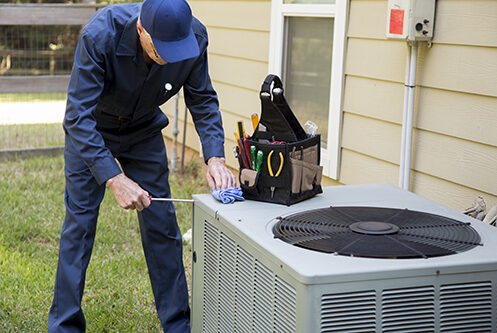HVAC systems need proper airflow to function correctly. Without it, they struggle to maintain a uniform temperature throughout the whole home. This leads to increased energy consumption and potential equipment issues. With air balancing, it becomes possible for the HVAC system to experience optimal airflow at all times.
What Is Airflow Balancing?
Air balancing aims to enhance the efficiency and uniform distribution of conditioned air throughout a home by adjusting and optimizing the airflow within an HVAC system. This process involves regulating registers, diffusers and dampers to maintain consistent temperatures and adequate air circulation. It starts with professionals assessing air pressure, airflow rates and temperature differences to determine which settings and adjustments to make.
Understanding Air Balancing From a Scientific Perspective
HVAC systems rely on principles of thermodynamics and fluid dynamics to ensure efficient airflow. Improving how the air moves throughout the HVAC system requires careful consideration things like duct design, component sizes (such as fans and coils) and a thorough examination of air pressure changes. In order to attain the required balance, HVAC specialists may use Bernoulli’s principle to make educated modifications. When it comes to duct design, component size and overall system efficiency, this theory is a lifesaver for optimizing airflow. To improve air balance, experts examine the system’s performance using a variety of measuring instruments (like airflow hoods and thermal anemometers); these scientific tools provide exact readings and enable fine-tuning.
Experts check that the supply and return airflows stay balanced by measuring and adjusting them. This helps in keeping the temperature where it should be without wasting too much power. They also check for discrepancies or imbalances by measuring the airflow velocities in different parts of the home. Evaluating and modifying the ventilation rates is another scientific part of the process. This effectively removes stale air from the home while introducing just the right quantity of fresh air from outside.
Important Statistics About Air Balancing
There are several statistics that highlight the value of scientific-based air balancing. The National Institute of Standards and Technology found that structures can lose as much as 30% of their energy due to air balance problems. Some studies show proper air balancing decreases the risk of developing sick building syndrome (SBS) by 20%. SBS refers to a group of symptoms that individuals report feeling when they are inside a certain structure. Many people think about SBS when they think of business or office buildings, but it can also occur in residential settings. Other research indicates that effective air balancing can reduce energy expenses by as much as 30%.
Primary Benefits of Science-Based Air Balancing
Investing in science-based air handling translates into several benefits for homes and the people that live there. Here’s how investing in air balancing can become a cornerstone for fostering a healthier, more comfortable and environmentally conscious home.
Get Rid of Uneven Temperatures
When it comes to eliminating the age-old problem of hot and cold spots, air balancing is an indispensable tool. Every room in the home gets a better amount of conditioned air thanks to improved airflow, and you can rest assured that if there are issues with heating or cooling your home, it’s not due to airflow problems.
Boost HVAC Energy Efficiency
Air balancing is a potent tool for improving energy efficiency. When airflow is uniform, the system works better and parts don’t wear out as quickly. In addition to making the house more sustainable and environmentally friendly, this also increases the efficiency of heating and cooling systems.
Improved Indoor Air Quality
Indoor air quality issues such as high humidity, mold growth and allergens are common in Florida due to the state’s warm and humid climate. Air balancing keeps air moving throughout the home at all times. This makes it less likely for airborne contaminants like allergens and dust to linger in the air or settle on furnishings. Instead, the HVAC filter captures the pollutants, removing them from the air.
Longer HVAC Lifespan
When there is enough airflow, the HVAC system operates more efficiently and with less wear and tear on its parts. This extends the life of its mechanical parts and electronics, resulting in fewer repairs and replacements. Many experts agree that professional air balancing can extend the life of HVAC systems by up to five years or more.
Cost Savings
The improved comfort, air quality and energy efficiency of the home turn into multiple cost savings. With fewer hot and cold spots, you won’t have to use the HVAC system as much. The improved air quality results in cost savings by reducing the need to go to the doctor for respiratory issues. Higher HVAC energy efficiency means the home uses less energy to heat and cool, which lowers energy bills. The longer the HVAC lifespan, the less money you have to spend on repairs and replacements.
Need help with HVAC repairs, maintenance or installations in Cape Coral, FL? Ultimate Homes & Cooling offers HVAC and electrical services, along with indoor air quality testing, pool heaters, pool pumps and more. To schedule air balancing for your home’s HVAC system, contact us at Ultimate Homes & Cooling today.


